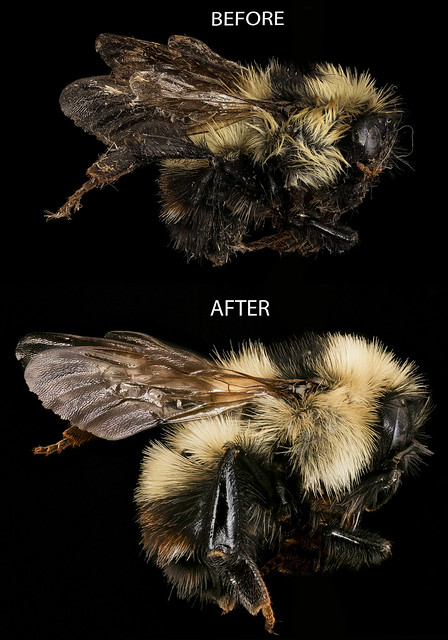Fat Freezing: The Modern Approach to Non-Invasive Fat Reduction
Introduction to Fat Freezing
Say goodbye to stubborn fat that seems impossible to get rid of with diet and exercise alone. Introducing fat freezing, the modern approach to non-invasive fat reduction! In this blog post, we will explore the incredible benefits of this innovative treatment and how it can help you achieve your desired body shape without surgery or downtime. Whether you’re struggling with love handles, muffin tops, or excess belly fat, fat freezing may be just what you need to sculpt your body and boost your confidence. So sit back, relax, and let’s dive into the world of fat freezing!
How Does Fat Freezing Work?
How Does Fat Freezing Work?
Fat freezing, also known as cryolipolysis, is a revolutionary non-invasive procedure that targets and eliminates stubborn fat cells in specific areas of the body. It works by subjecting these unwanted fat cells to extreme cold temperatures, causing them to freeze and eventually die off.
During a fat freezing treatment session, a specialized device is placed on the targeted area, such as the abdomen or thighs. This device then delivers controlled cooling to the underlying fat cells without harming the surrounding tissues. The cold temperature triggers a process called apoptosis, where the treated fat cells are gradually broken down and eliminated naturally by the body’s lymphatic system over time.
One of the key advantages of fat freezing is its ability to selectively target stubborn pockets of fat that are resistant to diet and exercise. Unlike other methods that rely on heat or ultrasound waves to destroy fat cells, this non-invasive technique specifically focuses on cooling adipose tissue while leaving nearby structures unharmed.
The duration of each session typically ranges from 30 minutes to an hour depending on the size and number of areas being treated. While some patients may experience mild discomfort during the initial stages of cooling, it quickly subsides as numbing takes effect.
It’s important to note that results from fat freezing are not immediate; they gradually become noticeable over several weeks as your body naturally processes and eliminates the destroyed fat cells. Many individuals require multiple sessions spaced out over several months for optimal results.
This modern approach offers an effective alternative for those looking to reduce localized areas of excess body fat without resorting to surgery or invasive procedures. With its minimal downtime and proven track record in targeting stubborn bulges, it’s no wonder why more people are turning towards this innovative method for achieving their desired physique
Benefits of Fat Freezing
Benefits of Fat Freezing
Fat freezing, also known as cryolipolysis, offers a range of benefits for individuals looking to reduce stubborn pockets of fat without undergoing invasive surgery. One major benefit is the non-invasive nature of the procedure. Unlike liposuction or other surgical options, fat freezing requires no incisions or anesthesia.
Another advantage is that fat freezing specifically targets and eliminates fat cells in treated areas. This means that surrounding tissues are left unharmed during the process. Additionally, once the targeted fat cells are frozen and eliminated from your body through natural processes, they will not return.
Unlike some other methods of fat reduction, such as dieting or exercise alone, which can lead to overall weight loss but may not necessarily target specific areas of stubborn fat deposits; with fat freezing you have more control over where you want to see results.
Furthermore, recovery time following a fat freezing treatment is minimal compared to traditional surgical procedures like liposuction. You can typically resume your normal activities immediately after the session without any necessary downtime.
It’s important to note that while many people experience positive results with just one treatment session, multiple sessions may be recommended for optimal results depending on your individual goals and needs.
The benefits of fat freezing make it an attractive option for those seeking a non-invasive approach to reducing unwanted pockets of fat. It allows for targeted treatment with minimal downtime and has proven effectiveness in eliminating stubborn areas resistant to diet and exercise efforts.
The Process of Fat Freezing

The process of fat freezing, also known as cryolipolysis, is a non-invasive procedure that targets and eliminates stubborn pockets of fat. It has gained popularity in recent years due to its effectiveness and minimal downtime.
During the treatment, a specialized device is used to cool the targeted area to temperatures that are low enough to freeze and destroy fat cells without harming surrounding tissue. The cooling process triggers apoptosis, which is the natural death of fat cells. Over time, these damaged cells are naturally eliminated from the body through metabolic processes.
The duration of each session can vary depending on the size and number of areas being treated. Most treatments last around 30-60 minutes per area. Patients may experience sensations such as intense cold or pulling during the first few minutes, but these usually subside as the area becomes numb.
After undergoing fat freezing, patients can typically resume their daily activities immediately with no downtime required. Some may experience fat freezing temporary side effects like redness, bruising, or numbness in the treated area, but these symptoms generally resolve within a few days.
To achieve optimal results, multiple sessions may be necessary spaced several weeks apart. This allows for gradual reduction in fat volume over time.
It’s important to note that while fat freezing can effectively reduce localized areas of fat accumulation, it does not replace healthy lifestyle habits such as regular exercise and a balanced diet for overall weight loss.
Overall,”The Process of Fat Freezing” offers individuals an innovative approach to targeting those stubborn areas that resist traditional methods of weight loss or toning up
Common Areas Treated with Fat Freezing
Common Areas Treated with Fat Freezing
When it comes to stubborn fat pockets, there are certain areas of the body that seem particularly resistant to diet and exercise. Fortunately, fat freezing offers a solution for reducing unwanted fat in these problem areas.
One common area treated with fat freezing is the abdomen. Many individuals struggle with excess belly fat, which can be difficult to target through traditional means. Fat freezing allows for precise targeting of this area, helping to sculpt a flatter stomach and more defined waistline.
Another popular treatment area is the thighs. Whether dealing with inner thigh chafing or simply wanting slimmer legs overall, fat freezing can help by specifically targeting and eliminating unwanted fat cells in the thighs.
For those struggling with love handles or muffin tops, fat freezing provides a non-invasive option for reducing fatty deposits in these areas. By carefully applying controlled cooling technology, these stubborn pockets of fat can be effectively minimized.
In addition to the abdomen, thighs, and love handles/muffin tops, other common treatment areas include the upper arms (to address “bat wings”), back (for bra bulge), double chin (submental area), and even under the buttocks (banana roll).
By targeting these specific problem areas through targeted cooling technology, individuals can achieve a more balanced physique without resorting to invasive surgical procedures.
Remember that while each person’s body is unique and responds differently to treatments like fat freezing; consulting an experienced professional will help determine if you are an ideal candidate for this procedure.
Results and Recovery Time
Results and Recovery Time
After undergoing a fat freezing treatment, you may be eager to see the results. It’s important to note that the process is not instant, and it takes time for your body to naturally eliminate the frozen fat cells. You won’t see immediate changes right after the session, but over the course of several weeks, you’ll notice a gradual reduction in stubborn areas.
The recovery time for fat freezing is typically minimal compared to surgical procedures. Since there are no incisions or anesthesia involved, you can usually resume your normal activities immediately after the treatment. Some people experience mild redness, bruising, or numbness in the treated area, but these side effects are temporary and should subside within a few days.
It’s crucial to have realistic expectations regarding fat freezing results. While this non-invasive method can effectively reduce targeted pockets of fat without surgery or downtime, it may require multiple sessions for optimal outcomes. Each person’s body reacts differently to the treatment, so individual results will vary.
To enhance and maintain your results from fat freezing treatments, it’s important to follow a healthy lifestyle with regular exercise and a balanced diet. Remember that maintaining overall wellness goes hand in hand with achieving long-term success in reducing unwanted fat.
In summary…
Fat freezing provides gradual yet noticeable results over time as your body eliminates frozen fat cells naturally. Recovery time is minimal with little disruption to your daily routine. Realistic expectations are key when considering this non-invasive approach as multiple sessions may be needed for optimal outcomes. To maximize and sustain your results from fat freezing treatments, adopting healthy habits such as regular exercise and proper nutrition plays an essential role.
Comparing Fat Freezing to Other Non-Invasive Fat Reduction Methods
When it comes to non-invasive fat reduction methods, there are several options available today. One popular approach is fat freezing, also known as cryolipolysis. But how does it compare fat freezing to other methods? Let’s explore:
Laser liposuction uses laser energy to target and dissolve fat cells, while ultrasound therapy utilizes sound waves to break down fat deposits. These techniques can be effective, but they may require multiple treatments and have varying degrees of discomfort.
On the other hand, fat freezing offers a unique advantage – it targets specific areas without damaging surrounding tissues. This makes it a safe and precise method for reducing stubborn pockets of fat.
Another comparison is with injectable treatments such as Kybella or mesotherapy. While these injections can effectively destroy fat cells over time, they may cause swelling and require multiple sessions.
Compared to traditional surgical procedures like liposuction or tummy tucks, which involve incisions and downtime for recovery, fat freezing requires no surgery or anesthesia.
It’s important to remember that each individual may respond differently to different methods. Consulting with a qualified professional will help determine which option is best suited for your specific needs.
In conclusion (in last section), when comparing non-invasive fat reduction methods like laser liposuction, ultrasound therapy, injectables, and surgical procedures with fat freezing; consider factors such as effectiveness in targeting stubborn areas safely without damage to surrounding tissues; discomfort levels during treatment; number of required sessions; recovery time; risks involved in the procedure; and individual response variability.
Considerations Before Undergoing Fat Freezing
Considerations Before Undergoing Fat Freezing
Before jumping into any cosmetic procedure, it’s important to carefully consider a few key factors. When it comes to fat freezing, here are some things you should keep in mind.
It’s crucial to have realistic expectations about the results of fat freezing. While this innovative technique can effectively reduce stubborn pockets of fat, it may not provide the same dramatic results as invasive surgical procedures like liposuction.
You must ensure that you are a suitable candidate for fat freezing. This treatment is generally most effective for individuals who are already at or close to their target weight but struggle with localized areas of excess fat that won’t budge despite diet and exercise efforts.
Another consideration is the potential side effects and risks associated with fat freezing. Although rare, some people may experience temporary redness, bruising, numbness, or mild discomfort in the treated area following the procedure.
Furthermore, understanding the time commitment involved is essential. Each session typically lasts around 35-60 minutes per targeted area and multiple sessions may be required to achieve optimal results.
Cost plays a significant role in decision-making. It’s important to research and compare prices offered by different clinics while considering your budgetary constraints.
By taking these considerations into account before undergoing fat freezing treatment, you’ll be better equipped to make an informed decision about whether this non-invasive approach aligns with your goals and expectations!
Cost of Fat Freezing and Insurance Coverage

Cost of Fat Freezing and Insurance Coverage
When considering fat freezing as a non-invasive fat reduction method, it’s important to factor in the cost and whether insurance coverage is available. The cost of fat freezing can vary depending on different factors such as the location, clinic, and the number of treatment sessions required.
On average, a single session of fat freezing can range from $600 to $1,200. However, multiple sessions may be needed for optimal results. It’s recommended to consult with a professional who can assess your specific needs and provide an accurate estimate.
It’s worth noting that most insurance companies classify fat freezing as a cosmetic procedure rather than a medically necessary one. As a result, insurance coverage for this treatment is typically not available. However, some clinics may offer financing options or payment plans to make the procedure more affordable.
When considering the cost of fat freezing, it’s essential to weigh it against other non-invasive fat reduction methods such as liposuction or laser treatments which have their own associated costs.
In conclusion (as per instructions), while there may be no insurance coverage for fat freezing and the cost can vary depending on various factors; many individuals find that its effectiveness and long-lasting results make it worth investing in for achieving their desired body contours without surgery.
Conclusion
Conclusion
In today’s world, where everyone is constantly striving to achieve their ideal body shape, fat freezing has emerged as a modern approach to non-invasive fat reduction. With its numerous benefits and minimal recovery time, it has become an increasingly popular choice for those looking to sculpt their bodies without going under the knife.
Through the process of cryolipolysis, fat freezing effectively targets and eliminates stubborn pockets of fat that are resistant to diet and exercise. By subjecting these areas to extremely cold temperatures, the technology selectively freezes and destroys fat cells while leaving surrounding tissues unharmed.
One of the biggest advantages of fat freezing is its versatility in treating various areas of the body. Whether it’s love handles, belly bulges, or double chins, this procedure can be applied to almost any problem area you may have. It allows for precise contouring and shaping without invasive surgery or lengthy downtime.
When compared to other non-invasive methods like laser treatments or radiofrequency therapy, fat freezing stands out as a highly effective option with lasting results. While some alternatives may require multiple sessions or maintenance treatments, fat freezing often achieves noticeable improvements after just one session.
Before undergoing a fat freezing treatment, it is important to consider certain factors such as your overall health condition and expectations. Consulting with a qualified professional will ensure that you receive personalized advice tailored specifically for your needs.
Cost is another aspect worth considering when contemplating this procedure. The price varies depending on factors such as the number of areas treated and individual clinic rates. It’s essential to research different clinics in order to find one that offers reasonable prices while maintaining high-quality standards.
While insurance coverage for cosmetic procedures can be limited, there may be cases where medical necessity can justify reimbursement from certain providers. Exploring all available options before making a decision is crucial in managing costs associated with fat freezing treatment.
In conclusion (not conclusively!), if you’re seeking an effective way to reduce unwanted fat without surgery, fat freezing may be worth considering. With its innovative approach and


